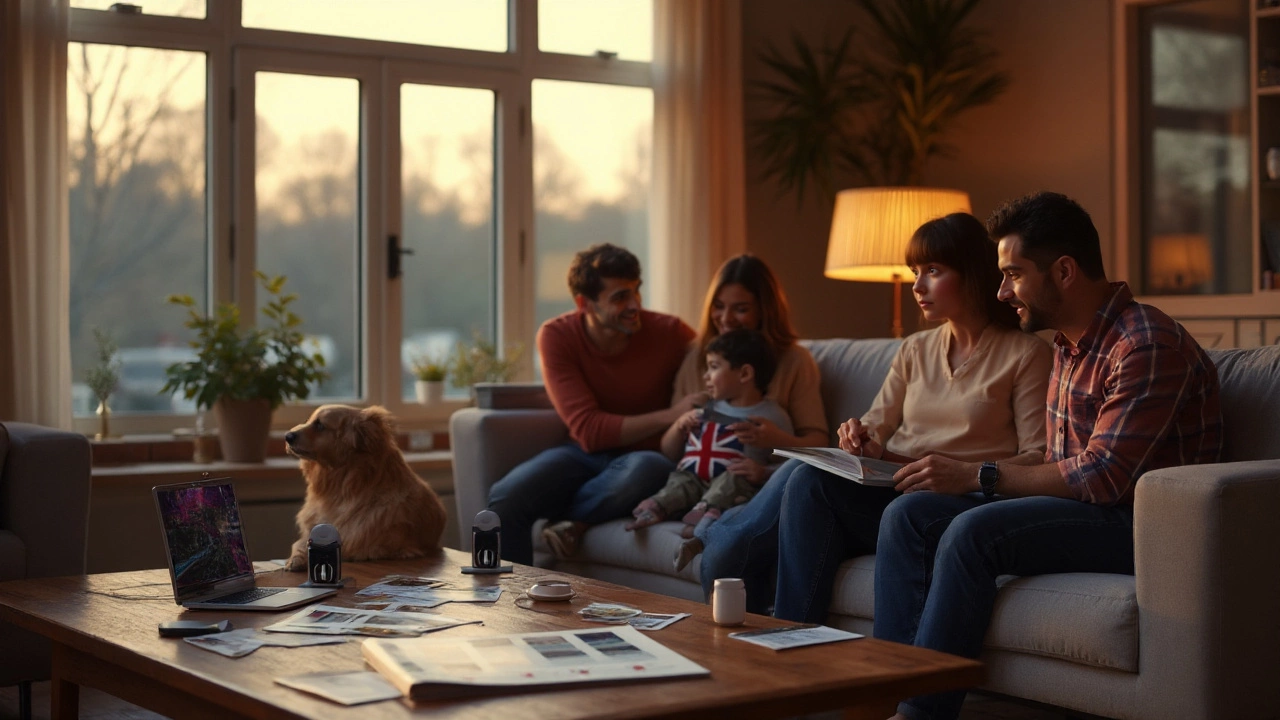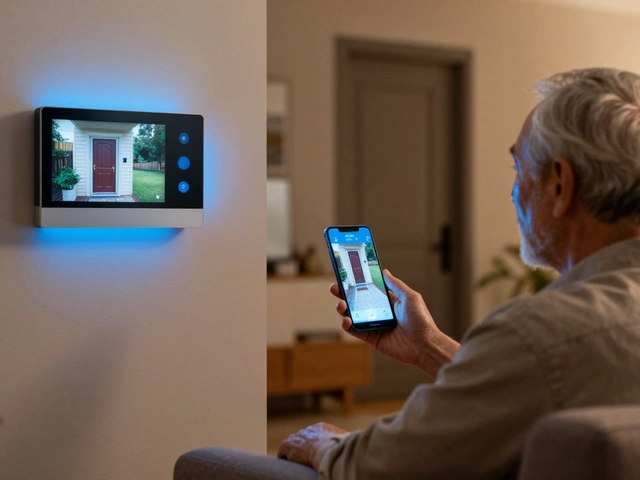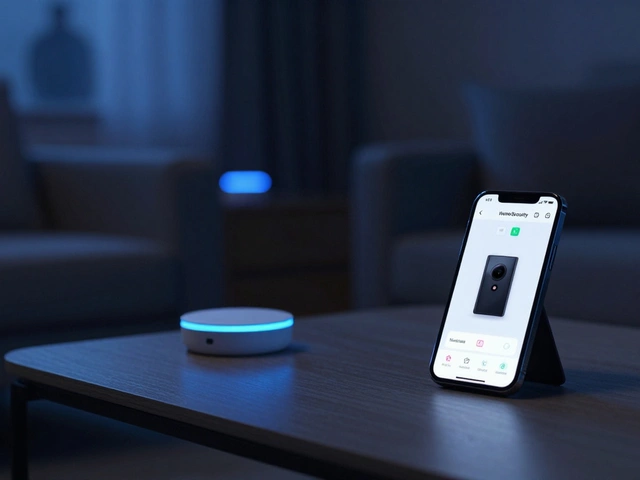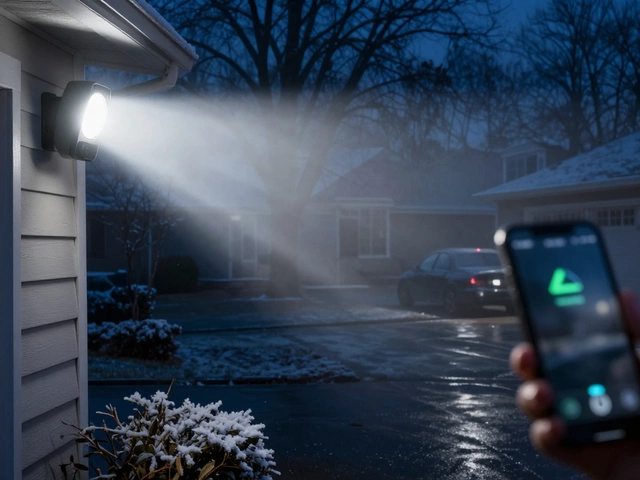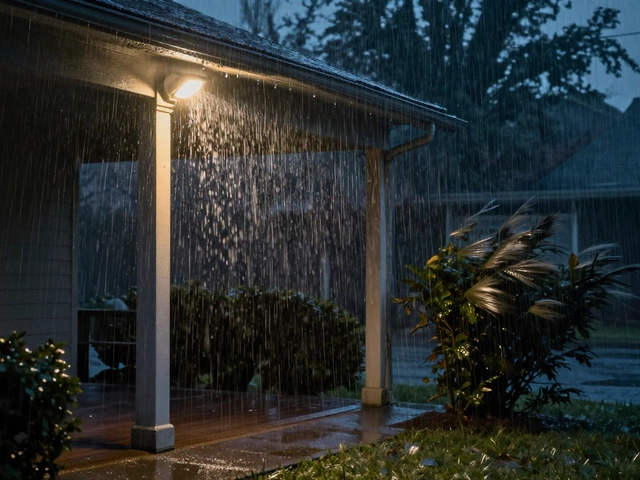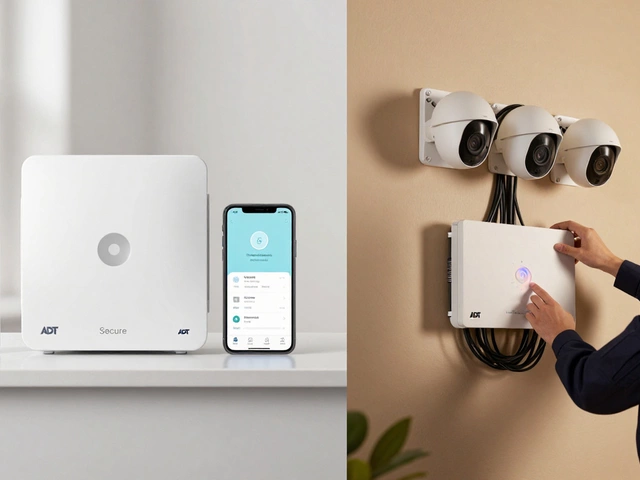Loads of people think buying a home security camera is simple—just order the one with the best reviews, right? Not quite. Burglars are getting smarter, tech is moving fast, and there are more camera options than there are types of bread at the store. If you pick the wrong camera, you could end up missing key footage, draining your wallet, or even helping someone hack into your Wi-Fi. Here's the plain truth: the right camera protects your home, your stuff, and your peace of mind. So why do folks still grab the first cheap camera they see? Usually because the options are overwhelming, the tech lingo is confusing, and everyone's in a rush. But slow down for ten minutes—you'll save yourself time, money, and a whole lot of headaches. Grab a seat, because we're unpacking everything you need to know so you can pick the best camera for your home, no regrets.
Understanding Different Types of Home Security Cameras
Let’s face it—not all cameras are the same, and knowing the basics makes life much easier. The big split is indoor versus outdoor cameras. Indoor cameras watch over your living room, hallway, or whatever room matters most, while outdoor cameras deal with rain, sleet, snow, sun, and those sneaky package thieves. Most outdoor cameras are bulkier, with weatherproof casings that handle wild temperature jumps—think Minnesota winters or Arizona summers—and quite a few of them even pack infrared night vision that picks up faces after sundown. According to a 2024 report from Security Industry Association, around 67% of homeowners admitted to choosing the wrong camera because they didn’t consider where it’d be used. Wild, right?
Dome, bullet, and pan-tilt-zoom (PTZ) cameras might sound technical but here’s the real deal: dome cameras blend easily into ceilings, making them a smart choice for people who hate the "look, I’ve got security!" vibe. Bullet cameras are shaped like—well—bullets, easy to spot, and act as a clear warning. PTZ cameras let you swivel, zoom, and pan using your phone. These are best for folks who want to check every corner from their couches. Then you’ve got wireless versus wired. Wireless cameras are the favorite these days since you don’t need to call an electrician. Still, wired cameras don’t rely on Wi-Fi, offer steady feeds, and are less likely to lose footage if your internet blips during a storm.
But don’t ignore cameras with built-in spotlights, two-way talk, or AI person detection. These features aren’t gimmicks. Want to scare off a porch pirate? Flash those spotlights. Want to ask a delivery driver to leave your box behind a planter? That’s what the mic and speaker are for. Some AI cameras even distinguish between a raccoon and a human—no more phone alerts every time the neighbor’s cat struts by. When it comes to placement, placing cameras higher (about nine feet up) keeps them out of reach but still catches faces clearly. Want a camera that does it all? Some leading brands now let you set up ‘activity zones’ in your app, so the camera only records when someone steps on your driveway, not every passing car.
Here's a quick snapshot to help compare popular features:
| Camera Type | Best For | Main Features | Example Brands |
|---|---|---|---|
| Dome | Ceilings, indoors | Discrete, wide angle | Nest, Hikvision |
| Bullet | Outdoor walls | Visible deterrent, weatherproof | Arlo, Reolink |
| PTZ | Large areas | Remote control, zoom, rotation | Dahua, Amcrest |
So before you even search “best home camera,” ask yourself these questions: Where will you put it? Do you want to scare off intruders, or just catch what happens? Will you need night vision or color video at night? Once you figure that out, you’ve already skipped half the stress most folks pile on.
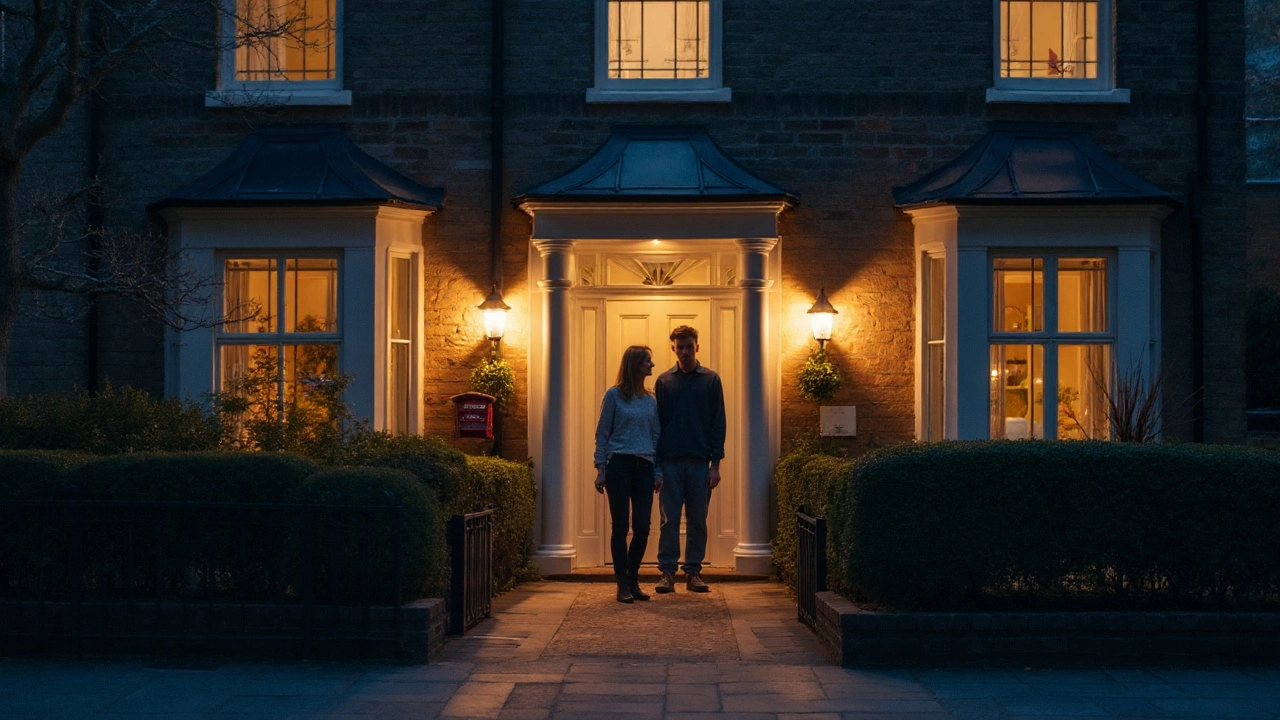
Key Features That Actually Matter
Forget the glittery gimmicks—what features do you truly need in a home security camera? Resolution is a big one. You’ll see "1080p" and "4K" everywhere, and yes, higher makes a difference. A 1080p camera captures enough detail for most people to recognize faces and license plates. If you want super-crisp video (and don’t mind chewing up Wi-Fi bandwidth or storage), go for 2K or 4K. Just don’t get carried away—more pixels means bigger files and sometimes, laggier video feeds if your Wi-Fi is a bit iffy. For homes with patchy Wi-Fi, stick with 1080p for smoother performance.
Field of view matters too. Some cameras show only a narrow slice; others capture a wide sweep (look for 120° or wider if you want a camera to cover a whole room). Audio? Two-way talk isn’t just for yelling at dog-walkers. It’s handy when you want to tell delivery drivers you’re home (or pretend to be). Motion detection has gotten smarter—with AI, now cameras can tell the difference between real threats and background stuff like leaves blowing in the wind. Google’s Nest Cam and Arlo’s line of cameras nail this, thanks to AI-driven person alerts.
Let’s talk storage. Most big brands want you to pay monthly to store recordings in the cloud. Some cameras offer microSD slots, so you can store footage locally (free), but if thieves make off with the camera, that memory card goes with it. Honestly, cloud storage is safer—mostly encrypted and often keeps footage even if your device is swiped. Prices are decent in 2025: you’ll see plans as low as $3 a month for 30 days of storage per camera. Want to skip subscriptions? Look for brands that don’t lock core functions (like live feed or basic recordings) behind a paywall. Eufy’s newer cameras are good about this.
Night vision is a must—60% of break-ins happen after dark. Make sure you get a camera with infrared LEDs or, better, "color night vision." Arlo Pro series, for example, gives you a clear view even under streetlights. You’ll want cameras that fire off alerts fast, too. The best models send push notifications straight to your phone within seconds—no one wants to find out about a break-in after lunch.
Smart home compatibility saves headaches. Cameras that integrate with Amazon Alexa, Google Assistant, or Apple HomeKit let you pull up feeds on your smart display with a quick command. Check if your favorite camera brand hooks up to your smart garage door, alarm system, or the video doorbell out front. Unified alerts and automations make a real difference when every second counts.
- Weather resistance is a must for outdoor models – check the IP rating on the box (IP65 or higher stays safe in storms).
- Look for cameras with tamper alerts – these ping you if someone tries to yank the device off the wall.
- Power source matters: battery-powered = easy DIY setup, but recharge every couple of months; wired = zero battery hassle but needs more planning.
- If you have pets, get a model with “pet immunity” for motion detection, so Fluffy isn’t always setting off false alarms.
- Set up multi-factor authentication on your camera app. In 2023, there were over 175,000 reported home camera hacks worldwide—protect your footage with strong passwords and two-step login.
Here’s a stat: According to a study by SafeWise in early 2025, homeowners with connected cameras that sent instant alerts and had local + cloud backup reduced loss from burglaries by 55% compared to those using basic, old-model cameras. Embracing smart features isn’t just about being trendy—it’s about real outcomes.
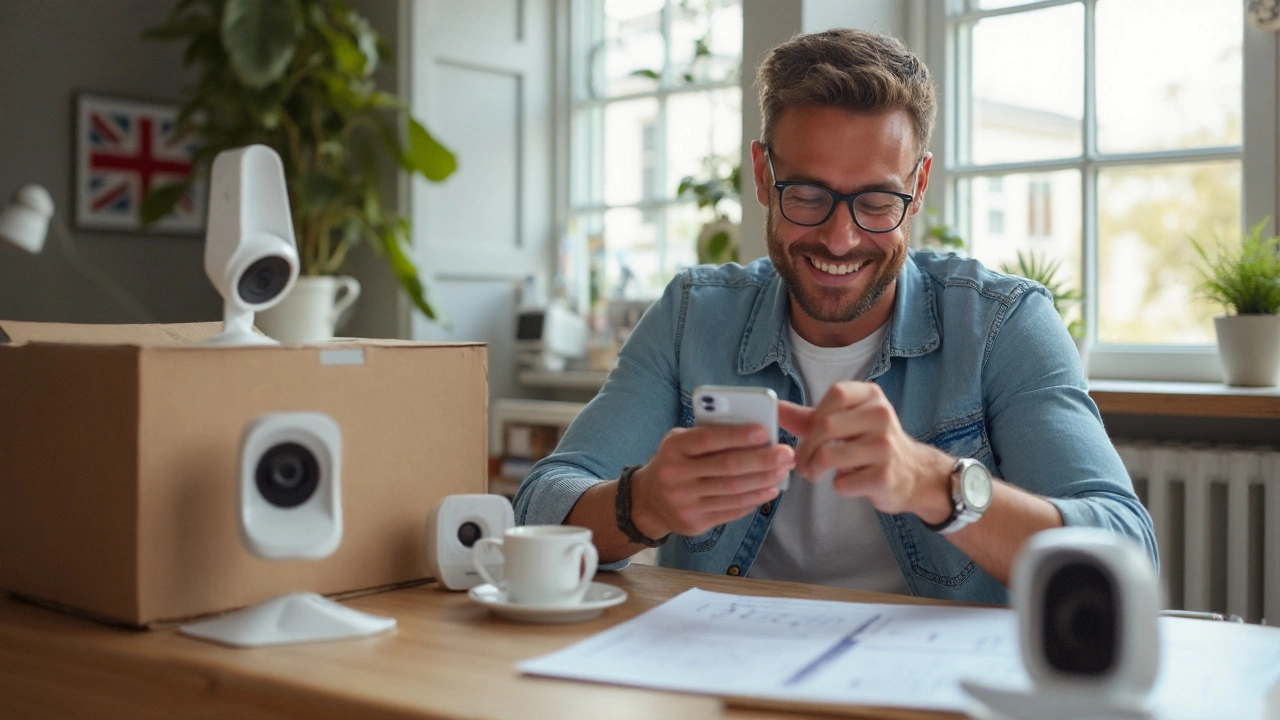
How to Choose the Right Camera for Your Home and Budget
Don’t let price tags scare you off. You can snag a solid home security camera for around $50, though top-tier setups can cost several hundred. The trick is matching your budget to your priorities. Ask yourself: is this just for the front door? Or do you need a camera at every entrance, windows, and the backyard? Single-camera starters work for apartments or condos, but bigger homes run best with a system that connects several cameras to one app. You’ll want matching brands to avoid crazy app juggling. Ring, Arlo, and Wyze all have multi-camera solutions with user-friendly interfaces.
Before you hit "buy," factor in hidden costs. Many cameras seem like a bargain upfront, but then push monthly fees for cloud storage, AI features, or even basic playback. Always read the fine print and double-check if what you need—like video history or smart alerts—is included for free. Stick with brands that stay honest about what’s free and what’s not. Wyze and Eufy are great for folks who hate subscriptions. Google Nest and Ring have more polished features if you don’t mind shelling out a few bucks a month.
Want facial recognition, package detection, or custom motion zones? These features are handy but can bump up the price. Some subscription plans start as low as $3 a month per camera, or $10 a month for whole-home coverage. Not a fan of the cloud? Get a wired DVR/NVR kit instead—these store all the footage right at your house and have zero monthly charges (but aren’t as easy to access from your phone when you’re traveling).
Installation’s gotten easier than ever. Wireless cameras can go up in under fifteen minutes with a screwdriver and smartphone. Even wired kits are more plug-and-play than they used to be, with color-coded cables and step-by-step app guides. Watch a YouTube setup demo first—sometimes the “hardest” thing is just climbing a ladder. If you live in an apartment, double-check your lease rules. Portable, adhesive-mount cameras work without drilling.
Let’s do a quick price comparison:
| Brand/Model | Resolution | Indoor/Outdoor | Cloud Storage | Average Price (2025) |
|---|---|---|---|---|
| Wyze Cam v4 | 1080p | Both | Optional, $2/mo | $45 |
| Arlo Pro 5S | 2K | Outdoor | $3/mo | $170 |
| Google Nest Cam | 1080p | Both | $6/mo | $120 |
| EufyCam 3 | 4K | Outdoor | Free (local) | $200 |
Before you wrap up your search, remember this: look for the home security camera features that actually fit your house, lifestyle, and tech skills. It’s less about brand snobbery and more about picking the right tools for your unique setup. Worried about hacking? Stick with cameras that offer end-to-end encryption and keep your firmware up to date—manufacturers are constantly patching security holes, but only if you let them update the device. If you’ve got aging family or kids at home, cameras with emergency call buttons or voice response are gold.
No two homes are the same, and your reasons for wanting a camera might change over time. Maybe it started as "this neighborhood’s getting sketchy," but next year you want to check in on pets or show off those new holiday lights. Choose a camera or system that grows with you. A little planning now saves a lot of regret later—and that’s a trade-off I’ll take every time.

